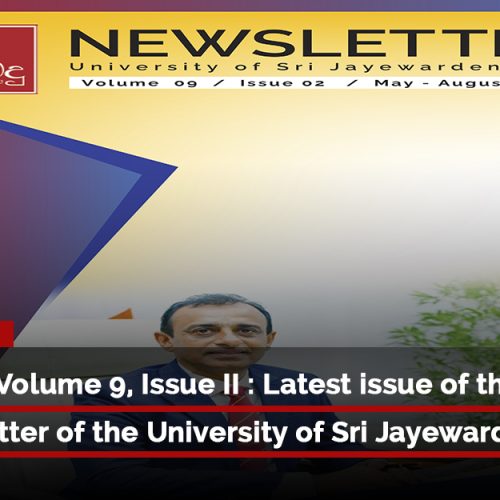
The Sinhala and Hindu New Year has been one of the annual and seasonal events but the exact beginning of it is buried in the history.
History of Sinhala and Hindu New Year
In 1885 the British Colonial rulers have announced this as a holiday. Science then, even though there were many successive administrative changes, it has been considered a government announced holiday. “By the end of this month (March) several flowering trees are in bloom and many tropical fruits are abundance yet “April is the warmest month of the year’ says Handbook for the Ceylon Traveler. Further it continues “April is also a month of festivals in Sri Lanka: the Sinhala and Tamil New Year, Milad- un- Nabi, and Easter.
Robert Knox (1981) who resided in Kandy as a prisoner of the Sinhala King too mentioned his experiences of the Sinhala and Hindu New Year as celebrated by the locals. Robert Knox writes that during the time of his residing in Kandy New Year was a major festival of the Sinhalese and it was celebrate in March with royal patronage. It is a assumed that the Nayakkar Kings of Southern India who ruled during the later part of the Kandyan Kingdom shifted the festival to April to fall in line with the Tamil New Year called Pudu Warsham. This might have avoided both Sinhalese and Tamils having two separate festivals in successive months. Davy (1983, 126) also mentions that this (Sinhala and Hindu New Year) is one of the four great national festivals. Parker (1982, 18) explains the pains taken by the locals for this august festival.
‘One of the pleasantest features of village life is the family re-union at the Sinhalese New Year……..I have known considerable numbers of villagers tramp ninety miles of hot dusty roads, with an equality return journey in prospect, in order to be present at this home gathering’.
But Wijesekara (1987) believes that Sinhala and Hindu New Year, marks a set of customs and ceremonies associated with sheer supervision. He points out the reference to the lunar calendar in arranging the programme of activities in their day to day lives. New Year is a solar festival but the main Buddhist festivals in Sri Lanka such as Vesak, Poson and Esala hold on Poya days are based on lunar observations. Yet again there is an argument that Sinhala and Hindu New Year cannot be categories as a Hindu festival because it is a national festival of Tamils and some others in South India but not of the all Indians who are Hindus. Puthandu is the better known Tamil New Year, that falls on the first day of the Tamil New Year is , 13th April, celebrated by the Tamils in Tamil Nadu, in Pondicherry in India, is Sri Lanka and by Tamil populations in Malaysia, Singapore, Reunion Island and Mauritius.
Astrological Concept
The astrologers believe that the house of “Aries” (Mesha Rashiya) can be seen directly above Sri Lanka. One group assumes that it is above Mannarama whereas the others believe it to be above Dondra Head (Devinuwara). The reason for the fact is that the belief “Irugal Devalaya” (Seenigama) is located exactly above the house of “Aries”. So this geographical reason has made people select the 14th of April as the day to celebrate New Year.
According to all these historical records and the present experience we could understand that the Sinhala and Hindu New Year is combined with mass culture through the institution religion in two main ethnic groups on the society. The relevant authorities announce through media how the Sinhala and Hindu New Year should be spent and the masses follow these instructions. The auspicious times of the specific activities are decided according to the planetary movements of the universe. So it is an activity based more of the Hindu astrological tradition than the Sinhala Buddhist tradition.
Traditional and Cultural Festival
The Sinhalese people, mainly the Sinhalese Buddhist and the Tamil Hindus get ready for this traditional and cultural festival of April from March itself. First, they clean up their environment either the immediate garden or the surrounding of the house. Then, many colors wash their houses and some buy certain new items replacing the old, outdated or unusable items. All those who could afford want to make it a ‘new’ year in real in real sense of the world and deed. The people go to buy ‘new’ cloths for themselves, parents, children relatives and buy provisions to prepare numerous sweetmeats that are going to be a major part of this traditional and cultural event.
The small children are waiting for the festival time since they enjoy the freedom from their school activities. Further the parents also give them to enjoy their time among the peers or siblings so the New Year season is truly a festive season for the children. Fire crackers are lit, and locally made ‘bamboo guns’, through dangerous at times, add noise to the merry making environment. The ‘Swing’ does not have a rest for the most part of the day because as one leaves it another one is waiting to get in and have a swing. The ‘Koel’ too adds its melodious voice from time to time to announce that the ‘New Year’ has arrived. The young ones, especially females, and in certain instances the elders get together to play ‘Panchi’ and ‘Olinda’. Revelry with folk dancing and music, raban playing (large bass drum with open bottom) and sports coupled with the age-old customs are other marked features.
‘New Year’ marks the movement of the sun from the zodiac house of ‘Pisces’ (Meena Rashiya) to the house of ‘Aries’ (Mesha Rashiya) the worship of ‘Sun God’ which was believed to be originated among the Aryans was another base for this festival. According to Hindu mythology ‘Indradeva’; the prince of Peace descends upon the earth to ensure peace and happiness among individuals. It is believed that the prince comes in a horse-drawn carriage. The color during of dress he wears varies each year and people are advised to wears that particular color during the festival season. The worship of Sun God is not unfamiliar to the Asian continent.
Sun is the all life giving source so playing the gratitude has been a great virtue. Rig Veda and Upanishad too discuss the power of the Sun. The ‘Thaipongal’ festival of Hindus too has been a form of worshiping the Sun God. He was worshiped in many communities such as ‘Ra’ in Egypt, ‘Helios’ in Greece and ‘Mithra’ in Persia. Even in Sri Lnaka there had been the worship of Sun God and it is mentioned in Ramayanaya. The great King Ravana was also the pioneer of the ‘Ra’ (Sun) clan of Sri Lanka. There are four devalas (Shrine rooms) erected in four different places to worship Sun. Eg; Hindu Kovila (Thirukkovil), Hiru Koneshwaram (Thirukoneshwaram), Hirugal Devalaya (Koggala) and Hirugal Thilakaya (Dondra Head). In other places like Arankale, Thanthirimale and Munneshwaram also the witnesses to the worship of Sun God.
The term ‘Awuruddda’ means the Awur (Sun) that moves straight ‘idda’. When the Sun moves straight above the earth the Sun positions itself exactly above the earth. The term ‘bak’ used for April also signifies the prosperity. The plenty of fruits and vegetables make the time period more prosperous. Another important aspect is the spring festival.
The Sinhala and Hindu New Year is the only festival in the world that is based on the movement of the solar system and time. The Orientals measured times through the seasonal changes,. The main measuring criterion was the sun. The entire movement of the Sun is divided into twelve equal proportions and for each phase a zodiac sign is attached, the ancient tribes all around the globe who worshiped Sun and nature. They believed that the arrival of the spring bring new life like a new deity taking charge of Mother Nature. All the festivals during the New Year season could be traced to this concept.
The two Asian ethnic communities, Sinhala and Tamil, are mainly relying on agriculture. So the traditional Sinhala and Hindu New Year coincide with the ending of one phase of the agricultural cycle. The harvesting of the “Maha Season” (September to March) is over by March and then the farmers have to get ready for the ‘Yala season’ (May to August). It marks the end of the harvest season and also coincides with one of two instances when the sun is directly above Sri Lanka. During this period the stores are full and there is no any serious agricultural activity so there are ample opportunities for the villagers to take part I any activity leisurely.
Rain falls after a period of hot and dry weather. Trees are covered with fresh leaves and lush green fields are visible everywhere. Flowers bloom in numerous colors, vegetables and fruits are in abundance so it is the time of fruitfulness. Since harvesting is over, granaries are full and people have enough time to celebrate. Fertility of the harvest made the people happy and that has given birth to many rituals, customs and ceremonies connected with the New Year. The majority of the people in Asian contexts being farmers, they celebrate the occasion by offering thanks for the gods and goddesses who have helped them in numerous ways to achieve a better yield. The customs and rituals portray the beliefs and thinking of the people whose life is centered on agriculture. It is during this time in many villages many parents want to get their sons and daughters marry.
Read our next Post on Sinhala and Hindu New Year – Customs and Rituals
Selected bibliography
Amunugama. Sarath (1990) Notes on Sinhala Culture, Colombo: M. D. Gunasena.
Davy, John (1983) An Account of the interior of on and of its inhabitants with travels in that island, Dehiwala, Sri Lanka: Tisara Prakashakayo.
Handbook for the Ceylon Traveler (1983) Colombo: A Studio Times Publication
Knox, Robert. (981) An Historical Relation of Ceylon, Dehiwala. Sri Lanka: Tisara Prakashakayo.
Parker, Henry, (1982) Village Folk Tales of Ceylon – vol. 1. Dehiwala. Sri Lanka: Tisara Prakashakayo.
Wijesekara. Nandadewa (1987) The People of Ceylon, Colombo M. D. Gunasena.
William, R. H. (2004) Sinhala Aluth utwurudda raha Jayatishayu (Sinhala New Year and Astrology] Colombo: S. Godage and Brothers.
 By
By
Dr. Jayantha Jayasiri
Senior Lecturer
Department of Sociology and Anthropology
Faculty of Humanities and Social Sciences
University of Sri Jayewardenepura










